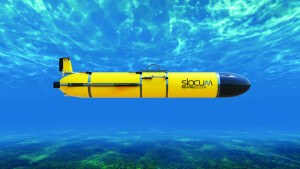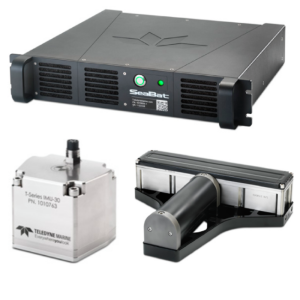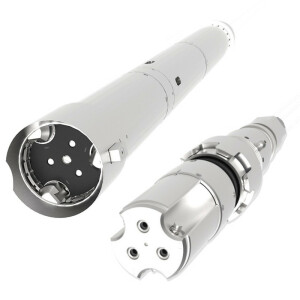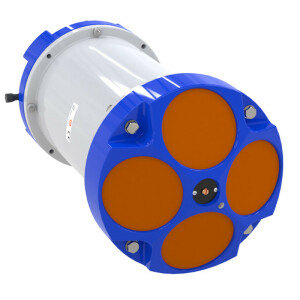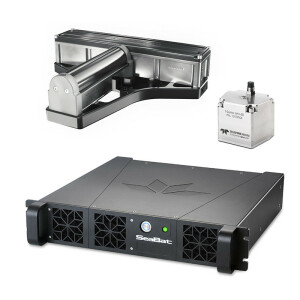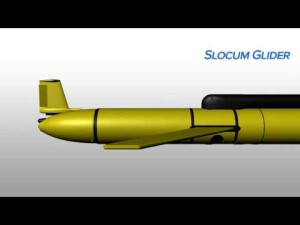
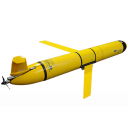

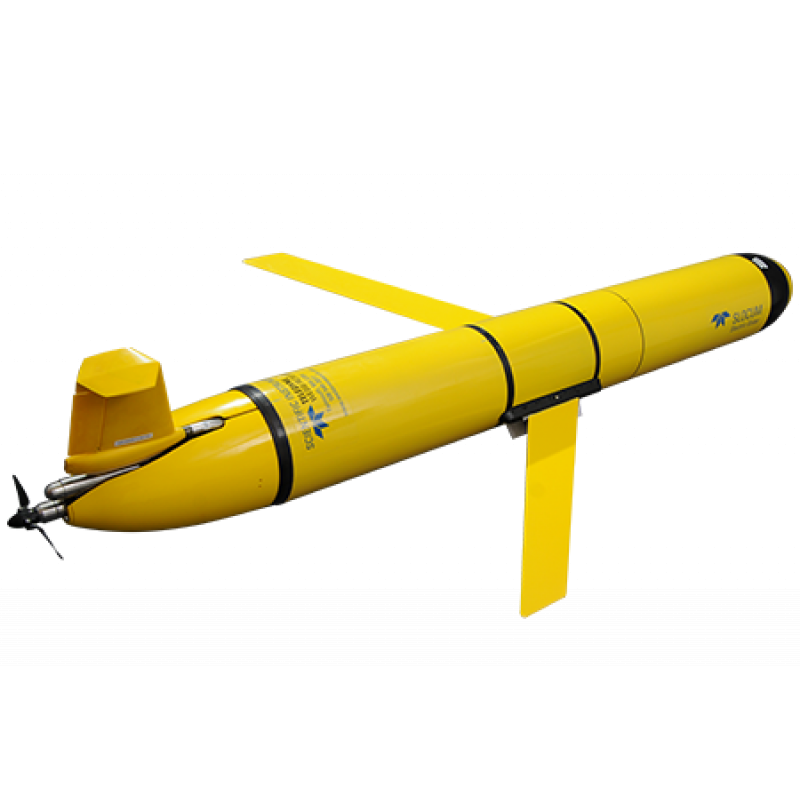
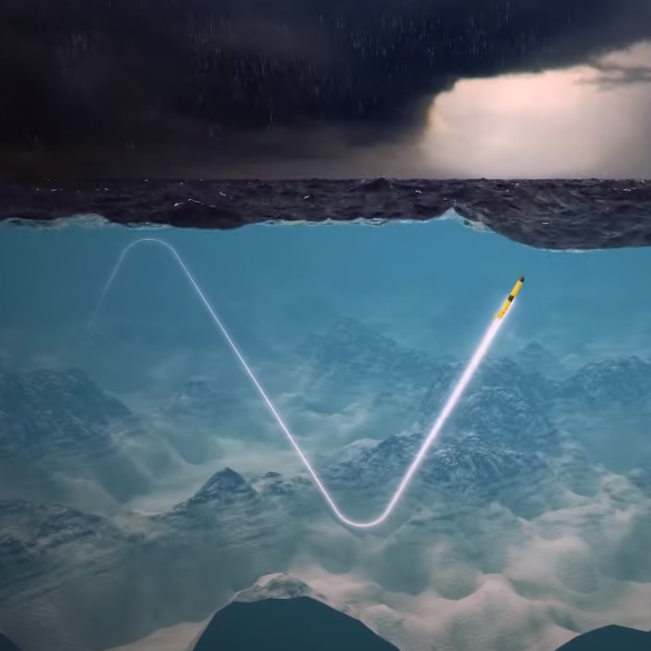
Slocum Glider
The Slocum glider is buoyancy-driven to enable long-range and duration remote water column observation for academic, military, and commercial applications. It can be deployed and recovered from any size vessel with minimal time on station.

Description
The Slocum glider is buoyancy driven to enable long range and duration remote water column observation for academic, military, and commercial applications. The Slocum Glider can be deployed and recovered from any size vessel with minimal time on station.
Once the Slocum glider is deployed, it can easily be controlled from anywhere in the world through the use of web based piloting tools. This allows fleets of gliders to be operated remotely with minimal personnel and infrastructure.
Versatility by Design
Slocum gliders are modular, allowing for rapid sensor reconfiguration to respond to emergency conditions or situations. Over 40 sensors and other options are available to address a wide variety of ocean conditions and sampling requirements.
Endurance for Persistent Monitoring Tasks
The buoyancy propulsion drive provides months of performance at sea and the optional thruster provides up to 2 knots of horizontal speed. This long endurance glider will expand your data collection range or situational awareness by providing real data over extended periods of time.
Even in the Roughest Seas
No matter the sea state, gliders are capable of continuous sampling without risking personnel or costly assets. Slocum gliders routinely operate around the world in extreme weather conditions.
Autonomous Operation
Slocum gliders can run pre-programmed routes, surfacing to transmit real time data to shore while downloading new instructions at regular intervals.
Data Like a Movie Instead of a Photo
Slocum gliders enable high resolution sampling over transects that can be revisited during a single deployment. This enables resolution of sampled features over time and space at a substantially lower cost than with traditional methods.
Do you have questions about this product?
- Questions about price, availability, and/or retailers
- Questions about technical specifications and usage
- Questions about suitability for your project or application
Specifications
-
Operations
-
Min. turning radius [m]
7
Launch and Recovery System
Small boat to large vessel with optional 10 m capture line using deployable nose release system
Max. speed [kn]
0.68
Min. crew size
1
Min. required number of surface computers
1
Required size of storage room
0.7 X 0.88 X 2.4 m in shipping container
-
General
-
Length [m]
1.5
Width [m]
0.22
Height [m]
0.22
Min. weight of AUV in air [kg]
56
Portable
Y
Crane required
N
Maximum payload [kg]
12
Maximum depth rating [m]
1000
Number of thrusters
1
Thruster specifications
One optional (hybrid glider option)
Hovering capabilities
Optional
Type
Glider
Propulsion or glider
Glider
-
Telemetry and Control
-
Acoustic telemetry
Y
Radio telemetry
Y
Radio baud rate [bit/s]
4800
Data sent to the surface
User defined at every glider surfacing
Control parameters sent to the AUV
Waypoints; flight parameters; science sensor suite sampling
Emergency recovery procedure
emergency battery, emergency circuit, emergency ejection weight; ARGOS transmitter
-
Navigation and Payload
-
Navigation sensors - standard
GPS, Attitude; Pressure; Altimeter - Dead reckoning
Navigation sensors - optional
Iridium
Payload sensors - standard
CTD
Payload sensors - optional
Acoustic bioprobe, ADCP, Acoustic Modem, Acoustic Mammal Detection, Bathyphotometer, Beam Attenuation Meter, CTD Pumped, Fish Detection, Hydrophones, Nitrate, Optical Backscatter, Optical Attenuation, Optical Fluorometer, Oxygen, PAR, Radiometer, Spectrophotometer, Turbulence
-
Battery
-
Total energy content [Wh]
8000
Endurance at nominal power [hr]
4392
Battery swap
Y
-
More information
-
Applications
Physical oceanography (CTD; oxygen; currents); biological oceanography (optics); gateway glider (communication acoustic - radio); storm glider (storm events); acoustic glider (mammal identification)
Distinguishable features
Long range ; high endurance environmental water column surveys with a variety of sensor suites - Highly configurable and expandable
Documents




